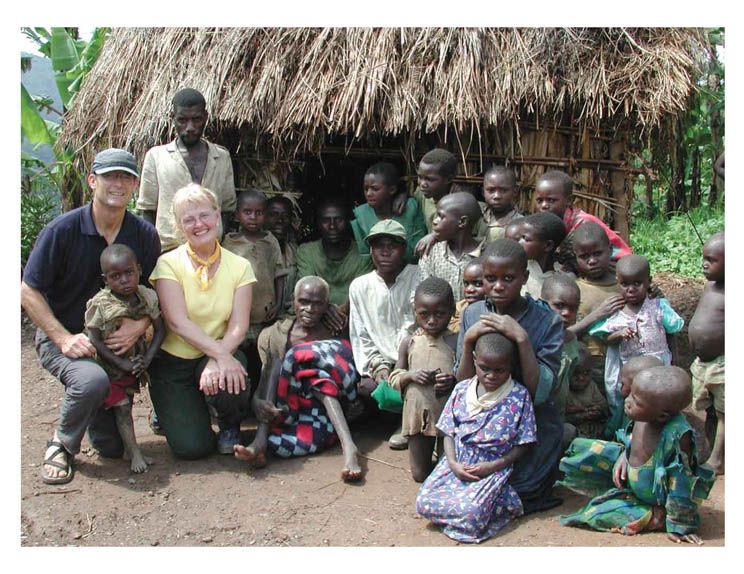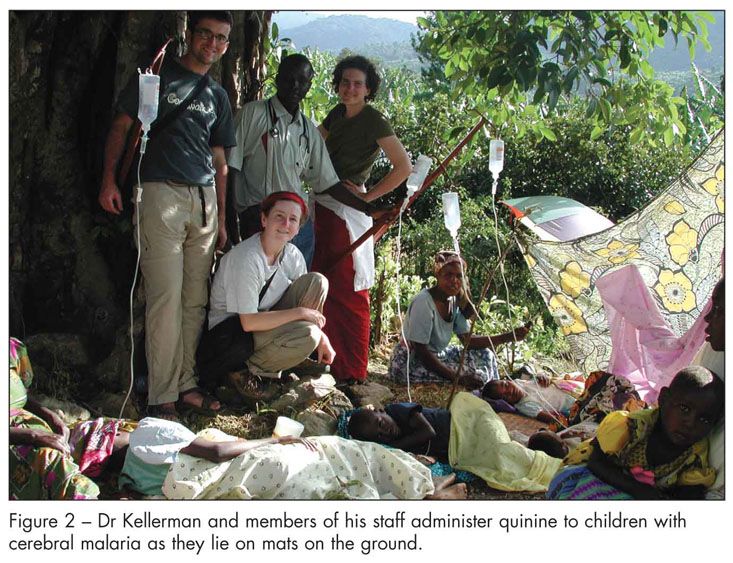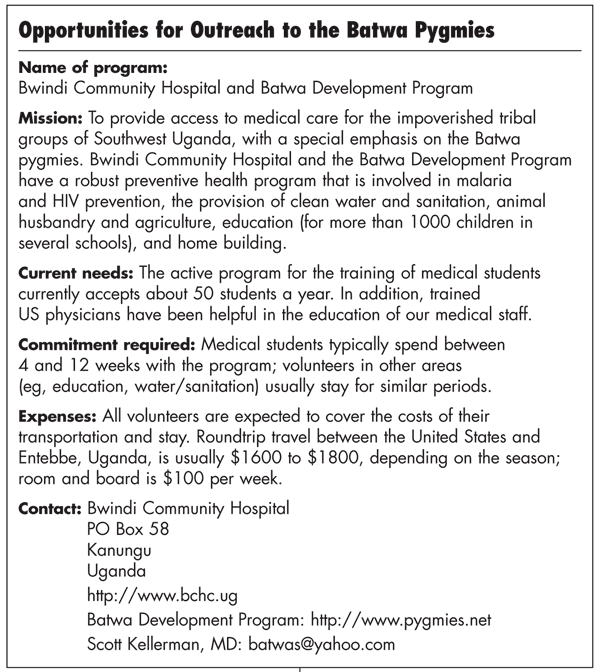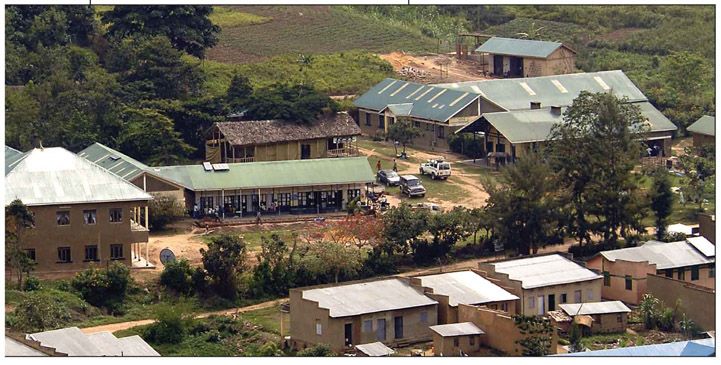- Clinical Technology
- Adult Immunization
- Hepatology
- Pediatric Immunization
- Screening
- Psychiatry
- Allergy
- Women's Health
- Cardiology
- Pediatrics
- Dermatology
- Endocrinology
- Pain Management
- Gastroenterology
- Infectious Disease
- Obesity Medicine
- Rheumatology
- Nephrology
- Neurology
- Pulmonology
In Africa With the Pygmies
We lie awake in our one-room hut before dawn listening to the cacophony of sounds emanating from the forest as the birds awake. The Bwindi Impenetrable Forest of Southwest Uganda contains over 350 species of birds, and it seems that they are all chattering to each other at once. The Bwindi Forest is also home to more than half of the world’s 650 mountain gorillas.
We lie awake in our one-room hut before dawn listening to the cacophony of sounds emanating from the forest as the birds awake. The Bwindi Impenetrable Forest of Southwest Uganda contains over 350 species of birds, and it seems that they are all chattering to each other at once. The Bwindi Forest is also home to more than half of the world’s 650 mountain gorillas.
Our life in Africa is a far cry from anything we had known previously (Figure 1). Both my wife Carol and I have deep roots in New Orleans. Carol is a graduate of Tulane University, and I earned both an

MD and a Masters in Public Health and Tropical Medicine from Tulane Medical School. After my residency, we had worked for a few years in Nepal, but after that we moved to California, where we made our home and raised a family.
We had enjoyed our time in Nepal, however, and we wanted to continue providing service in a similar fashion. Thus, our family summer vacations typically revolved around some form of outreach. We started a Little League baseball team at an orphanage in Bolivia, worked with street kids in Brazil, helped build a medical clinic in Kathmandu (in Nepal), helped with the construction of a hospital in Mexico, and did short-term medical outreach in Honduras and Nicaragua.
Africa calls to us
One area of the world that we had not experienced was Africa. Carol was fearful of the many diseases endemic to Africa and for years had steadfastly refused to go there, until she heard about the plight of the Batwa pygmies. These traditional hunter-gatherers were once part of the vast ecological complex of the Bwindi Forest. The forest was their home and their source of subsistence. However, when a national park was created to protect the mountain gorillas, the pygmies were forced to leave. The transition to a sedentary lifestyle after a nomadic existence of picking fruits from the trees, hunting with poison-tipped arrows, and living in temporary shelters of leaves and branches, proved disastrous for them.
Episcopal Medical Missions Foundation, an organization with a medical outreach in developing countries, needed a volunteer to do a needs assessment for the pygmies. Since early childhood, Carol had been enthralled when she read National Geographic articles about these forest dwellers. She agreed to accompany our youngest son and me to assess their plight.
The pygmies and their land
During our 6-week visit, we unearthed appalling statistics; for example, the childhood mortality rate of the Batwa pygmies was 38%, twice as high as the Ugandan average (itself one of the worst in the world). The pygmies were dying of malaria, dysentery, malnutrition, and the usual complement of tropical diseases. Without intervention it was obvious that they would not survive for long.
However, in contrast to the desperate situation of the pygmies, the surrounding countryside teemed with an abundance of exotic plants and animals. Colors seemed brighter, the sunsets more vibrant, and the wildlife more striking than anything we had ever experienced. Hippos fed around our tent at night when we camped by rivers. We sat atop the roof rack of a vehicle and tracked tree-sitting lions, with elephants trumpeting our approach. In addition, in spite of their desperate circumstances, the pygmies expressed an infectious joy for life through their singing, dancing, and laughter.
We found the needs of the pygmies so compelling and the continent so enticing that when we returned to the United States, I retired from my private medical practice and Carol from her counseling practice. We shed many of our possessions and prepared to return to Africa for an extended period.
Practicing medicine by the Bwindi Forest
Since returning to Uganda in 2001, our work with the Batwa pygmies has stretched us in ways we never could have imagined. Initially, we spent considerable time in a tent camping around the Bwindi

Forest and learning the Batwa’s language, culture, and traditions. We conducted mobile medical clinics under the protection of spreading fig trees, seeing 300 to 500 patients daily. We hung intravenous solutions from tree branches, secured them with vines, and dripped quinine into the veins of children who had cerebral malaria (Figure 2). Surgery was performed on mats laid on the open ground; this always drew a crowd.
In 2004 we constructed an outpatient unit and in 2005 a maternity unit to address the pygmies’ maternal mortality rate of 880 maternal deaths per 100,000 live births (that is, 1 maternal death for every 120 births). The hospital has continued to expand and now has 75 beds and a surgical theater that opened in January 2009 (Figure 3).

Battling malaria and HIV
However, it soon became clear that having a hospital does not necessarily improve the health of a community. Malaria was a devastating illness at our hospital. In 2006, we lost 1 or 2 children a week to malaria. Because there were many local customs regarding malaria, we engaged our friends the abafumu (traditional healers), along with the elders, in an education campaign. The vulnerable children and pregnant mothers were identified, and 10,000 bed nets were subsequently distributed. We have not had a child die in our institution in more than 13 months, and the incidence of malaria has been reduced by 90%.
HIV/AIDS is a considerable burden in sub-Saharan Africa, where an estimated 25 million persons are HIV-positive. One of the focuses of our work at the hospital has been the prevention of mother-to-child transmission of HIV. If a mother is HIV-positive, the risk of her transmitting the infection to her children is about 35%, and if those of her children who are HIV-positive go undiagnosed and untreated, 50% of them will die by the age of 2 years. However, when antiretroviral medications are administered to the mother in the later stages of pregnancy and the early phase of breastfeeding-and to her child during the first week of life-the mother-to-child transmission rate can be reduced to less than 1%. To our great joy, we have found that HIV infection in childhood is a preventable illness.
Expanding our mission
It was obvious to us that without formal education, the options of the Batwa pygmies were limited. Because my wife had been a teacher as well as a counselor, education was a high priority. We have

constructed several schools, and these now serve more than 1000 students.
We have also started a training program for medical students from around the world, including students from Uganda. One of the American students in our program had this to say about his time with the pygmies: “Words cannot adequately describe the experience I have had working with the pygmies in the southwest Uganda area. I can honestly say that it was one of the defining moments of my life to date. By sharing their hard work, ample laughter, and enthusiasm to learn, the pygmies showed me a purely genuine human character that warmed my heart. It was eye-opening that those who seemed to have so little, actually had so much to give to me and gave it so freely. Their smiles and endless laughter are contagious, and I learned that when one has nothing, he or she can still give love.”

His remarks echo our sentiments completely. Although the challenges are tremendous, we consider it a great privilege to serve here in Equatorial Africa.
Reader Feedback
If other readers wanted to see an old classic about the people that the Kellermans serve, I recommend Colin Turnbull's The Forest People.
I thought the term "pygmies" had also become tainted by a perceived overtone of being patronizing; for southwest Africa, I believe the preferred term is San people, this being an ethnic name without overtone of stating physical stature; then again, much of what I thought I knew about this is from the writing of Laurens Van Der Post, whose accuracy has been questioned.
What is more certain, as reported in the NY Times among other places about a dozen years ago, is the compelling DNA evidence that the San are the original humans; all the rest of us have San roots. Is this not a perfect answer to the idiocy of those who express prejudice against persons of African origin? We are ALL of African origin! And I am so pleased and so proud to belong to the same profession as Dr Kellerman.
--Henry Schneiderman, MD
Vice-President for Medical Services and Physician-in-Chief
Hebrew Health Care, West Hartford, Conn
Dr Kellerman replies:
I do appreciate the comments by Dr Schneiderman; I have always appreciated his writings and also feel honored to be in the same profession as he.
The connotation "pygmy" is truly a deprecatory term, it refers to the length from fingertips to elbow. I have spent many hours in conversation with the Batwa asking them what they would like to be called; their universal response is-call me by my name. They do appreciate that most "mzungus" (white people) are not aware of the tribal group "Batwa," and consequently they are comfortable in general communications to mention them as pygmies. Parenthetically, when we first arrived in Uganda I asked them if they were proud to be pygmies; universally, they sadly hung their heads. Recently, as they have become educated and acquired houses, land, skills, and self-esteem, they now say to me that they are proud to be pygmies.
As Dr Schneiderman alluded to, the oldest genetic codes are found in the pygmies. If we trace our roots far enough back we all are related to the forest dwellers of sub-Saharan Africa.
